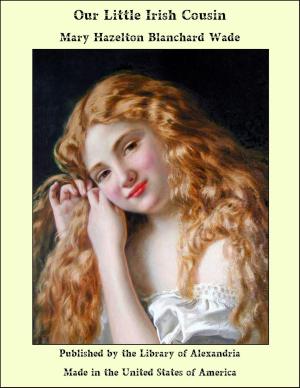Natural and Artificial Duck Culture
Nonfiction, Religion & Spirituality, New Age, History, Fiction & Literature| Author: | James Rankin | ISBN: | 9781465518767 |
| Publisher: | Library of Alexandria | Publication: | March 8, 2015 |
| Imprint: | Language: | English |
| Author: | James Rankin |
| ISBN: | 9781465518767 |
| Publisher: | Library of Alexandria |
| Publication: | March 8, 2015 |
| Imprint: | |
| Language: | English |
Our original motive in publishing this little book, was one of self-defense, to relieve ourselves, in a measure, of a correspondence which was becoming much too large for the time at our disposal. After reading from fifty to one hundred letters per day, from people, asking all manner of questions concerning the hatching, growing and marketing of ducks, in detail, there were not hours enough in the twenty-four to answer them. This book was published to send out with our machines to meet these queries and give our patrons our method of growing, supposing it would cover all the points in duck-culture, but it does not as yet answer the ends. The questions still come in far beyond our ability to answer, and as our fourth edition is about exhausted, we now publish a fifth, revised, enlarged and illustrated; also adding a Question Bureau, which will answer many of the questions which have reached us during the past few years concerning the growing, as well as the diseases to which the Pekin duck is subject. Though we have been in this business for nearly forty years, and have been eminently successful, we do not claim to know all about it; but by persistent effort, careful selection and breeding, have succeeded in developing a mammoth strain of Pekin ducks, which, for symmetry, precocity and fecundity (experts who have visited our place from all parts of the country tell us), stand unrivalled on this continent. Many of our customers write us that their birds average from 150 to 165 eggs per season. We would say that there is no domestic bird under so perfect control, so free from diseases of all kinds, or from insect parasites as the Pekin duck. From the time the little bird is hatched until it is full grown and ready to reproduce its own species, it is under the perfect control of the intelligent operator, who can produce feathers, flesh or bone at will, and even mature the bird and compel it to lay at four-and-a-half months old. There is no bird in existence that will respond to kind treatment, generous care and feed as the Pekin duck.
Our original motive in publishing this little book, was one of self-defense, to relieve ourselves, in a measure, of a correspondence which was becoming much too large for the time at our disposal. After reading from fifty to one hundred letters per day, from people, asking all manner of questions concerning the hatching, growing and marketing of ducks, in detail, there were not hours enough in the twenty-four to answer them. This book was published to send out with our machines to meet these queries and give our patrons our method of growing, supposing it would cover all the points in duck-culture, but it does not as yet answer the ends. The questions still come in far beyond our ability to answer, and as our fourth edition is about exhausted, we now publish a fifth, revised, enlarged and illustrated; also adding a Question Bureau, which will answer many of the questions which have reached us during the past few years concerning the growing, as well as the diseases to which the Pekin duck is subject. Though we have been in this business for nearly forty years, and have been eminently successful, we do not claim to know all about it; but by persistent effort, careful selection and breeding, have succeeded in developing a mammoth strain of Pekin ducks, which, for symmetry, precocity and fecundity (experts who have visited our place from all parts of the country tell us), stand unrivalled on this continent. Many of our customers write us that their birds average from 150 to 165 eggs per season. We would say that there is no domestic bird under so perfect control, so free from diseases of all kinds, or from insect parasites as the Pekin duck. From the time the little bird is hatched until it is full grown and ready to reproduce its own species, it is under the perfect control of the intelligent operator, who can produce feathers, flesh or bone at will, and even mature the bird and compel it to lay at four-and-a-half months old. There is no bird in existence that will respond to kind treatment, generous care and feed as the Pekin duck.















